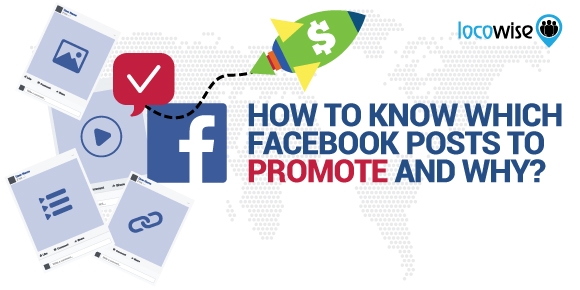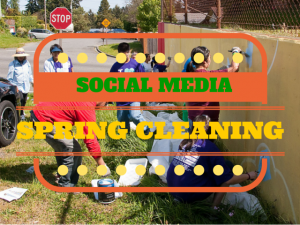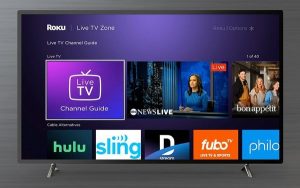— December 31, 2017
In recent years, both Twitter and Instagram have been trying to promote their advertising opportunities. Yet, today, Facebook is still the platform of choice when it comes to social media marketing.
One of the biggest reasons why advertising experts often choose the social network is the size of the audience. Combined with a diversity in the market and with a side-dish of worldwide perspectives, a brand is often guaranteed the ability to reach its specific target audience via sponsored content.
The process, usually in the hands of a digital marketing agency, includes content creation, planning, optimization of the campaign, analysis and execution. But a question that often goes unnoticed when selecting an advertising option on the social platform is whether to go “boost” or full-force and ultimately which Facebook posts you should promote and why.

The Simplicity of Boosted Content and The Customizability of Facebook Ads Variants
The two major types of advertising for Facebook pages are boosted content and Facebook Ads. Even though the topic regarding the differences between the two is worthy of a blog post on its own, what you should be aware of is that both options are valuable depending on your situation and marketing goal.
Facebook ad variants are perfect if you want to directly advertise your product to a select audience group with actionable and responsive content. What’s more, this type of ad allows you to customize your target audience with microtargeting behavioral and location-based options that aren’t available via boosted page posts. Another benefit is the multi-platform cross-promotion with Instagram content.
With all the benefits that come when you choose Facebook Ads, it’s rather obvious that they are a useful feature. Yet, for certain marketing goals, boosted posts might help you achieve better results. For starters, page posts should already be a part of your content strategy thus you won’t have to create any additional content for a specific marketing campaign.
The advertising is simple and easy to implement with just a few button clicks. Plus, it allows you to directly promote your Facebook business page within a more broad target audience, but it doesn’t restrict your original post reach.
What’s more, the post itself will still appear on your Facebook page thus you won’t lose any organic traffic and the post content that you already have. That being said, if you don’t want to dive into a difficult to plan and execute Facebook ads variant strategy, but you are still eager to receive the benefits of advertising via boosting your posts, which posts are best to promote? Let’s discuss the four different post types and the cases that are perfect for each of them.
The Unflattering Preposition of Link Posts
The social network offers a wide variety of different advertising options many of which are actionable and allow you to easily increase your social media conversion. In fact, Facebook for Business has a detailed library of examples and information that might help a digital agency in their choice. Not to mention, Facebook IQ often provides with deep insights on how to go into planning your next business move through social media.
With all that’s being offered on the table, it’s easy to see how the notion of boosting an existing link post you’ve recently shared is not that appetizing. For the past couple of years, especially following the introduction of Facebook Video (and Live Video), link sharing posts have been slowly, but steadily decreasing in terms of total engagement and engagement rate. And it doesn’t appear that links are making a slight resurgence especially compared to status updates.
But what’s rather surprising is that despite the fluctuation in both photo and status update posts in terms of total engagement, engagement rate and reach, links don’t appear to have the same problem. Yes, the numbers might be different compared to previous years, yet links do manage to retain some consistency throughout longer periods of time.
The prime reason for this lies within media relevancy and content fulfilling nature that links are able to provide. With a link, you not only have a certain level of flexibility, but you are also able to provide with detailed information on a matter that is relevant with virtually no limitations. Plus, links have the constant benefit of driving traffic to a website, which is usually one of the reasons for the creation of a Facebook page itself.
Why use link posts as boosted/sponsored content?
Link posts should be a cornerstone of any Facebook marketing strategy for a brand. While other types of content help you increase your brand reach and improve your engagement and growth, without link posts a social media marketing campaign is, in most cases, pretty much useless for things other than branding.
Promotion of link posts might not be the best choice for a marketing goal that has a target of better brand recognition, but is perfect for one that is evaluated via website traffic and website content analytics.
The use of link post promotion is perfect in a lot of cases:
? For website posts with viral-potential
? For posts that will spark a conversation
? For a press-release or a news announcement
? For subtle promotion of products
At other times, link post promotion is best to be avoided primarily due to the fact that Facebook Ads provide you with a better alternative in these particular cases:
? For sharing a product page from your website
? For sharing flashy news of a sale
? For a direct link to a website
? For links to third-party websites
The Worst-Case Scenario of Status Update Post Boosts
As aforementioned, status update post engagement often fluctuates. The total engagement is often far lower compared to any other post type. However, the main reason for this is that brands tend to avoid the use of this type of posts in their marketing campaigns on social media.
That being said, and as ER goes to show, status updates can often lead to better engagement than both links and images, and other times they are at the back of the pack.
With such uncertainty in the potential engagement, it’s easy to see why this type of post is rarely the best choice. In addition, all the other post types available on Facebook do have the basic feature of a status update. Thus, the use case scenario of when a status update should be the prefered sharing method is quite narrow.
When to promote a Facebook status update?
It’s difficult to make the case for Facebook status update promotion. In fact, instead of boosting a simple status update on your page, you’d be far better off to aim for almost any other type of Facebook Ads or boosted content advertising option.
The unicorn cases of boost potential for status updates do exist:
? When issuing a Facebook statement you want others to see (e.g. as damage control)
? For quick news-worthy updates (e.g. instead of a long newsletter)
There aren’t a lot of other cases in which you’ll find this boost option useful:
? To receive more engagement to a humoristic status update
? To promote a long (rant-type) Facebook update (for brands it’s best to post such thoughts on a blog and promote via other options)
Is the promotion of Photos on Facebook worth it?
Ever since the introduction of videos, photos are becoming less relevant on Facebook. Although popular within the internet culture spectrum (memes, motivational photos), for a brand, photos are often a way to enhance their visual reach or share a humanizing post. With lower engagement across the board and further noting on the reasoning behind photo posts, it’s easy to see why boosting a photo post might not be the best choice.
In fact, with the introduction of Facebook shop and adding onto the Facebook Ads variants that allow you to present amazing visual content, including photos, in far more actionable ways, the promotion via a boost of an existing photo post does seem rather irrelevant.
Case and point, while Facebook Ads are more actionable than links, videos and status updates, all other three post types do present a certain alternative in use and purpose. While flexible, photos do seem to be, while not as obvious, one of the worst choice for boosted post promotion.
Should you boost photos?
Yet, here’s a few rare cases in which you might find photo boost promotion useful:
? In case you run a media-orientated Facebook page that takes advantage of internet culture (primarily for the promotion of your page through the content you post itself)
? In case you run a specific photo-related industry page, such as photography, and promoting the post might boost your chances of hiring/work
And there are many similar occasions to the above, in which you want to totally avoid photo boost promotion:
? In case you use internet culture posts to boost your engagement and growth, but your brand/business isn’t represented or isn’t in the same industry that is represented by internet culture posts
? When photography imagery works well for your brand page, but doesn’t reflect the nature of your business (i.e. travel pages that use photos)
Video Content as The King of The Facebook Hill and its Promotion
There’s a particular reason why video is currently the king of Facebook content. Just scratching the surface, it is engaging in nature and it allows for broader messages, including brand ones. Plus, with the continuous rise of mobile use and the introduction of video playback, there’s just no way of getting around watching videos on the social network.
Primarily used for socializing, Facebook is a network in which video thrives within particular spectrums. Soothing videos that draw you in are perfect examples of videos that work. Short and funny jokes that have viral-potential are also great. Serious videos that play on emotional strings, while controversial, often get great results.
Not to mention, for a brand, posting a humanizing video of a team, the CEO speaking, or just a funny office prank, including anything in between, is also a great way to advance your marketing towards your audience. The verdict is simple and clear in that Facebook video and live video are simply great.
Videos are great for boosting, right?
But what’s great for natural traffic and engagement might not necessarily be that great for boosting. Here are a few occasions in which you want to boost your videos:
? When promoting humanizing brand content that reflects the brand (e.g. CEO addressing audience, professional office video shot tour)
? Original Video Content that shows the process of work and fits the “Facebook” standard (e.g. painter painting, ice cream makers, anything with viral potential)
But these cases should not be mistaken for the cases in which boosting video on Facebook is not recommended:
? To promote humanizing brand content that DOESN’T reflect your brand (e.g. a Halloween office prank that is humorous, yet unprofessional or a ‘funny” office tour that is not dealt with in a professional manner)
? Original video content that shows the process of work, but DOESN’T fit the “Facebook” standard (e.g. painter explaining each and every step of the painting process, great for YouTube, not for Facebook, or ice cream makers that explain the ingredients in detail or in a way that doesn’t engage the audience)
Is Facebook Boosted Promotion Worth it?
There are certain cases in which boosting your Facebook content is great. It is simple with just a click away and while it doesn’t provide you with the customizability of Facebook Ads, it does allow you to promote existing Facebook page content. So is it worth it? It depends on the case. Plus, the analytics can always help you out!
Digital & Social Articles on Business 2 Community
(76)
Report Post





